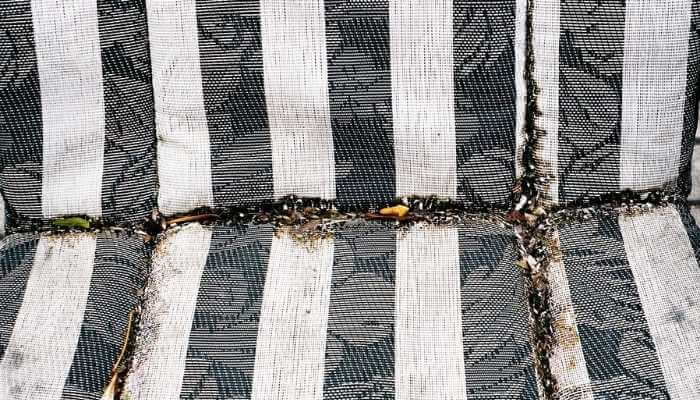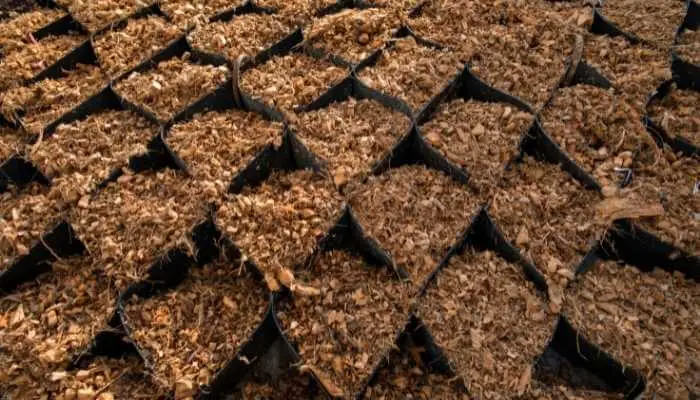
I’ve heard it called Coco Coir, Coconut Fiber, or even Coconut Peat. This fibrous material is often used as a substrate, a base, a material to mix into other materials to form a substrate. I see it a lot at co-ops and markets used for seedling cups and basket molds. So, what exactly is it?
Coconut coir is a substrate made from fiber that comes from the outside of a coconut. It is mixed with soil and other substrates to make a growing medium that is good for your plants. You should try using it because it’s much more beneficial than the normal peat moss most growers have used for years.
Now that you know what it is and that you should definitely be using it, let’s talk about the “WHY” portion of this topic and get to know coconut coir a little better!
What is Coco Coir?
Coco coir is the fiber on the outside of a coconut. So the husk -the part that would normally get thrown away once the good parts are used – that’s coconut coir. It’s become an additive for many gardeners and because it is a disposable waste product from an industry that means it’s sustainable.
Coco coir comes in three main forms: pulverized peat or powder, fiber, or chips. Usually, gardeners will use the dust made from ground coconut husks as an additive to other soils and substrates because it works so well for water retention.
The fiber is great for mulching or creating containers for seeding or holding plants. The chips are good for both mulches and for chopping down to help with whatever your mixture is for better aeration. If you get the chips ground enough but not powdered, it’s perfect for aeration with perlite for orchid growing.
What Are the Advantages of Using Coconut Coir?
Well, coco coir is sustainable. A coconut palm can produce up to 150 nuts per year. So it’s not like we’ll ever run out. The coconuts end up in grocery stores while the coir is discarded. It can be burned or just sent to the landfill, but why not repurpose it?
Coconut coir is lightweight and can be compacted to take up as little space as possible when shipped. It’s made from byproducts of a sustainable crop. Therefore it’s eco-friendly. Even if it ends up in a landfill, it breaks down. How long does coconut coir last? It takes a century to break down!
It’s between middle-expensive but it’s multipurpose, so those are advantages as well. It can easily be mixed with other substrates to augment the soil how you need it. Because it has a neutral pH, (meaning coconut coir is not acidic nor is it alkaline) it can be used with all kinds of plants, and you’d just need to add what the plant needs to the medium.
Because it contains no nutrients, it provides a “clean slate” for seeding and planting, especially in hydroponic planting. All you need to do is add the nutrients needed in the water.
Oh, and it absorbs water very quickly and can help plants that are in recovery from drought. As a matter of fact, it absorbs 10X its weight in water and so keeps roots well hydrated – making it perfect for seeding and hydroponics.
Since coconut coir doesn’t go bad and takes so long to break down, you can reuse it. You just have to remove all the stumps and roots from it. You can wash the coco coir as well to remove the water-soluble contents like sodium, which may have built up.
Then, you should treat it with a buffering solution that reverses the bonds made between the media and the salts, which releases potassium into the soil. This is kind of like fertilizer on top of a fertilizer. According to my sources, if you are an organic farmer, this isn’t allowed because it’s considered a “synthetic fertilization.” So you can bypass this, but you may need to find other sources to boost the needed elements and nutrients.
Though coconut coir doesn’t have pests itself, the containers for re-used coco coir should be washed to get rid of any possible bacteria or fungus. Insects do not like coconut coir. It also provides protection against certain root diseases and is naturally bacteria-free. This means a lot of natural pests are kept out of any plants that you put in a primary coconut coir medium.
Coconut coir doesn’t easily grow mold. However, if you are the type of grower that believes in adding carbohydrates and sugars to your soil to help encourage a good microbe community in your medium, mold might grow. This is because coco coir absorbs a lot of water, remember? And you’re adding sugar to that very moist surface. If your microbes can’t keep up, mold will take over. So be cautious.
My suggestion for a great buffering solution is the Canna Continental-9410901 Coco B 1 Liter.
What Are the Disadvantages to Using Coconut Coir?
What makes it advantageous in some situations can also be a problem in others. The fact that coco coir doesn’t contain any nutrients means that you have to add those nutrients, which is another step in your gardening process.
Speaking of adding nutrients, coco coir can sometimes absorb and withhold a large percentage of magnesium, calcium, and iron from plants. So whatever you use for fertilizing and feeding your plants while they are in coco coir, you should adjust for this accordingly.
Finding coconut coir locally can be an obstacle. Sure, you can order it online all day long, but it’s not often that you can find it in large quantities where you live; even at big box stores.
When you order coco coir, you may need to rinse it out. Not just because of it being dried and compacted, but because of the salt content. If you research your distributors, you may be able to find one that isn’t as apt to have too much salt content in their product.
Coconut coir is non-toxic to animals. There are even dog and cat mats made from the material because it soaks up moisture so well. However, when it comes to using a mulch with a coco coir base, be sure to be careful. If your animal ingests the fibers, those fibers will hit the digestive tract and the moisture can make it expand, causing obstructions.
How Can I Use Coconut Coir for the Best Results in My Gardening?
It really depends on what you’re gardening as to how you should use the coconut coir. I have a petter article concerning the plants that are best to use with it called What Plants Grow Best with Coconut Coir?
Just some reminders, though –
- When you use coconut coir in a container, it’s best to have a layer of pebbles in the bottom for good drainage because this stuff will retain water. I’ve seen most gardeners who use coconut coir say the sweet spot of any mixture is to use at least 30% – 40% coco coir as your soil amendment.
- Even though this material is great for seeding by itself, remember that it has a neutral pH and that your plants are going to need added nutrients if you are using most or all coconut coir as your substrate. Coco coir works best if it’s used as just one substrate in a mixture to form a good growing medium.
- When you look to purchase coconut coir, be sure that you purchase it from somewhere that processes it properly. Coco coir should be soaked so that the salt can be leached from the substrate and the material will then expand.













